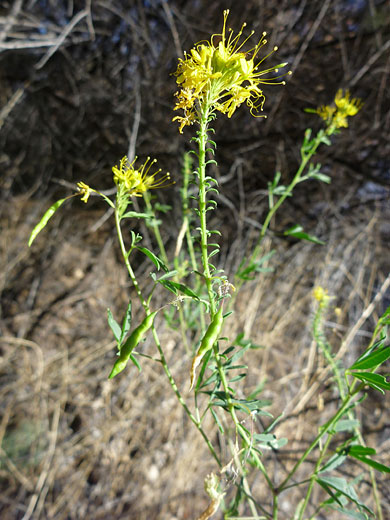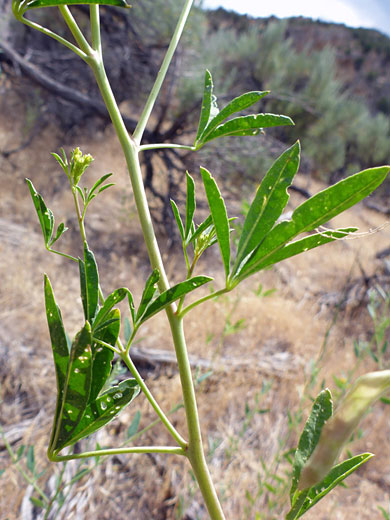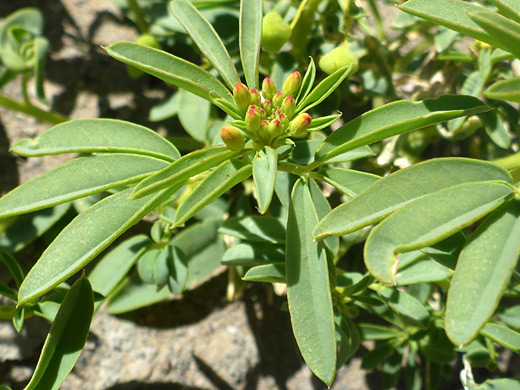Common names:
Yellow beeplant, yellow spiderflower
Family:
Scientific name:
Peritoma lutea
Synonym:
Cleome lutea
Main flower color:
Range:
Parts of all states west of the Rocky Mountains; mostly in the Great Basin
Height:
Up to 4 feet
Habitat:
Dry locations; sandy flats, scrubland, semideserts, roadsides; up to 7,800 feet
Leaves:
On 1 to 2 inch stalks, palmately divided into (usually) 5 elliptic leaflets, with finely serrate margins
Season:
May to September
Peritoma lutea is an easily recognizable species, producing elongated clusters of yellow flowers at the top of the upright, hairless, green stems, which may branch a few times towards the top. Flowers consist of four short, yellowish, lanceolate sepals and four longer, oblong petals around a group of stamens, which project outwards by nearly an inch. The filaments are topped by coiled anthers. Sepals have tiny teeth along their edges.
The palmate leaves grow at quite wide intervals all along the stem. Flowers form at the tip of the stem, which continues to grow, leaving withered blooms lower down; these develop into thin, green seed pods up to 1.5 inches long, so it is common to see both flowers and seeds on a single plant.
The palmate leaves grow at quite wide intervals all along the stem. Flowers form at the tip of the stem, which continues to grow, leaving withered blooms lower down; these develop into thin, green seed pods up to 1.5 inches long, so it is common to see both flowers and seeds on a single plant.
All Contents © Copyright The American Southwest | Comments and Questions | Contribute | Site Map












